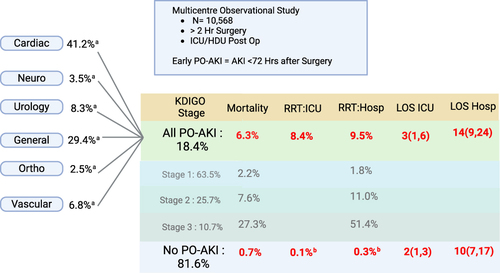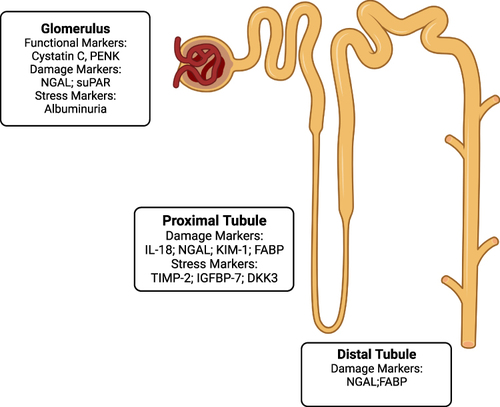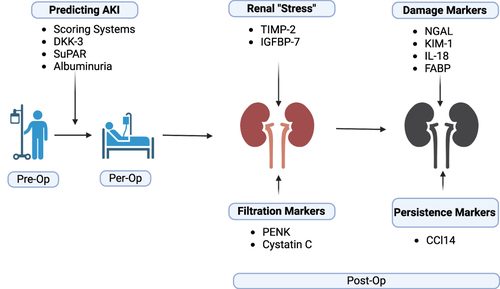Figures & data
Table 1 Adapted KDIGO Criteria for AKI Diagnosis
Figure 1 Outline of the results from the EPIS-AKI trial.Citation4 aPercentage of patients undergoing that surgery type who developed PO-AKI. bPatients who developed PO-AKI after 72 h and were therefore classified in the “No PO-AKI” group and received RRT (Renal Replacement Therapy).

Figure 2 Biomarkers of AKI implicated in PO-AKI.

Table 2 Significant Papers Investigating Biomarkers of AKI in Surgical Patients
Figure 3 Outline of stages in the patient journey, preoperative, perioperative and postoperative where biomarkers could be employed.

